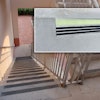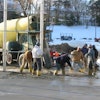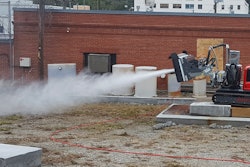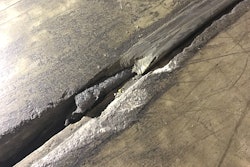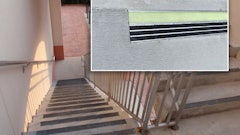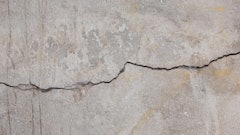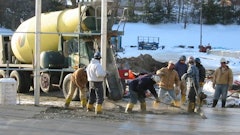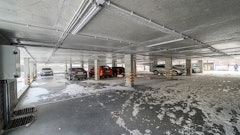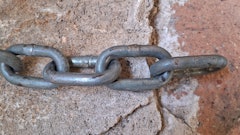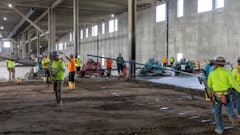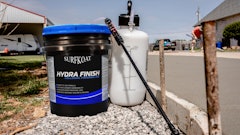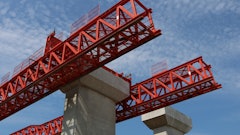
A biofilm forms on the interior surface of concrete as seawater penetrates the concrete of a road tunnel. A study by researchers at Chalmers University of Technology (located in Sweden) points to the mechanisms behind the degradation and its unexpectedly rapid progression.
Permit me to nerd out with some concrete science news for a moment.
Saltwater Intrusion
In the construction of a vehicle tunnel through rock, the roof and walls are sprayed with concrete to create an even surface layer and prevent stones from loosening and falling onto the road. When these are surrounded by seawater, the phenomenon known as saltwater intrusion occurs. Saltwater intrusion is a process that carries bacteria, which then form biofilms (or colonies) on the surface of the concrete.
That bacteria feed on the materials in the concrete, weakening the surface and causing it to become porous, causing high costs and increasing the risk of damage should pieces of the concrete fall from the tunnel's roof. Researchers at Chalmers University claim to have discovered new insights about the processes behind this degradation.
 Frank Persson - Chalmers University of TechnologyChalmers University of Technology | Catharina Björk
Frank Persson - Chalmers University of TechnologyChalmers University of Technology | Catharina Björk
Frank Persson, Associate Professor of Molecular Biology and Microbial Ecology at Chalmers' Department of Architecture and Civil Engineering, says that the researchers have been taking measurements in the Oslofjord tunnel since 2014. The tunnel runs about 23,970 ft. long and reaches about 440 ft below mean sea level.
Persson states that they've observed bacteria eating into the concrete surface up to 1 cm a year. The biofilm forms at the point of saltwater intrusion, however... all concrete in contact with water can get biocorrosion.
Not Unique to Norwegian Tunnels
As reported in the official announcement, sprayed concrete has been used in road tunnels on a larger scale since the 1990s, and since then, researchers have been able to see this fouling of biofilm. Despite this, there are currently very few similar studies of biocorrosion in underwater tunnels in marine environments.
 Britt-Marie Wilen - Chalmers University of TechnologyChalmers University of Technology | Anna-Lena Lundqvist
Britt-Marie Wilen - Chalmers University of TechnologyChalmers University of Technology | Anna-Lena Lundqvist
"The problem is probably greater in environments where seawater penetrates, partly because seawater is favourable for bacterial growth but also because the salt accelerates corrosion in the reinforcement. Climate change is also making the oceans warmer, and with warmer water, the pH value drops further, which could increase the rate of corrosion," says Wilén.
New concrete sprayed on walls and ceilings in tunnels has a high pH value, but as the concrete ages, a natural chemical degradation occurs, which causes the pH value of the concrete to drop and makes the environment more hospitable to bacteria.
The bacteria further accelerate the corrosion of the concrete reinforcement and in turn, the degradation of the concrete itself, when they metabolise iron, manganese, sulphur, and nitrogen in the concrete. The researchers have seen that this interacting degradation locally can be relatively fast. Under extreme conditions, the bacteria can penetrate up to 10 cm in five years. 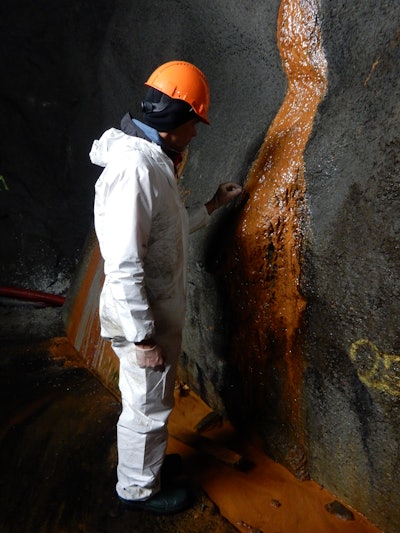 Chalmers University of Technology | Britt-Marie Wilén
Chalmers University of Technology | Britt-Marie Wilén
Wilén explains that cast concrete is more compact. It's strength aids to it's resistance to degradation - meaning it takes a longer time for the concrete to degrade. On the other hand, sprayed concrete is more porous and more susceptible to degradataion by bacteria.
Wilén adds:
[Sprayed concrete] also often contains steel fibers for increased strength. When the iron is oxidized due to corrosion, it also [can] act as substrate for some bacteria (iron-oxidizing bacteria) that can accelerate the biocorrosion even further. Bridges in water and especially in saline water can get biofilm growth and hence biocorrosion.
Wilén sees the biofilm as a clear warning signal. Keeping an eye on the progression will be helpful: measure the pH of the water that is transported on the concrete, monitor the spread of the biofilm, and locate any loose/damaged concrete, and removing the biofilm would all be useful.
"Another possibility is perhaps to add material that seal the cracks in the rock/concrete," says Wilén.
Concrete has originally very high pH and bacteria cannot survive on it. Once the pH starts to go down, they can colonize the surface and start forming biofilm under which the pH can go down and then the biocorrosion starts. Once it has started, it can be further accelerated if substrate is available. The Ca starts to be dissolved and the concrete becomes more porous and weak.
Safety
The researchers emphasise that road tunnels, despite this biofilm, are generally safe and are monitored by Norwegian authorities. It could be a dangerous situation should the concrete become too thin, allowing pieces of concrete to fall. As far as the researchers know, this has not happened.
Their recommendation based on the studies is to measure the pH value of the concrete continuously, examine the groundwater flow through the rock, and to monitor the spread of the biofilm. The groundwater flow affects the growth of biofilm, especially at lower flows, where the pH value of the biofilm is lower, which contributes to faster degradation of the concrete than at a higher groundwater flow that neutralises the acid in the biofilm.


